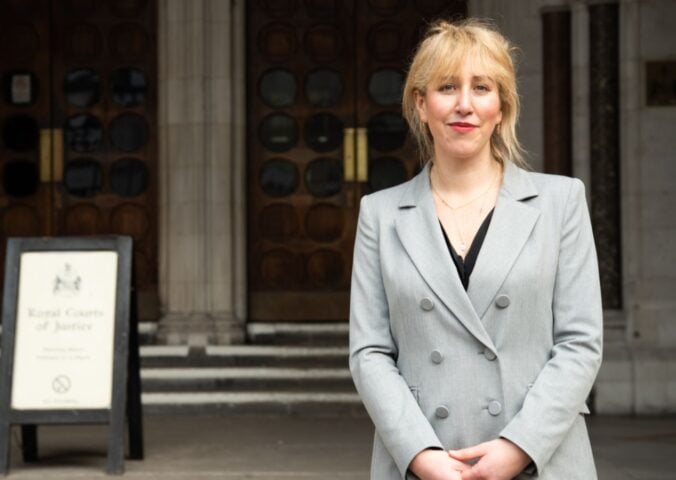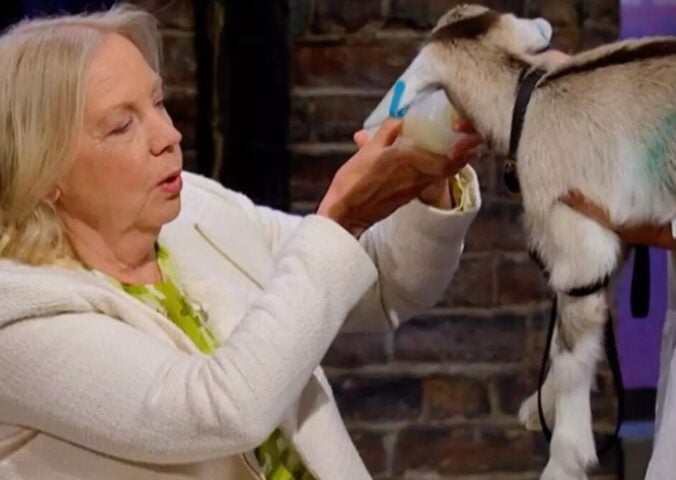From pigments in paints to installations in galleries, animals have long been used in art. Many take the stance that artists must be allowed their creative expression. But why is an artist’s whim more important than an animal’s life?
It was announced in July that, after successful opposition from PETA and Wolfsburg’s veterinary office, Damien Hirst’s artwork “A Hundred Years” would be removed from the Kunstmuseum, Germany.
The piece, a large glass vitrine divided into two sections, saw maggots hatch into flies in the first compartment. In the second, they were attracted to the UV light of an electrocuting device, where they were zapped to death.
The gallery’s director, Andreas Beitin, argued that the work was supposed to highlight how insects die constantly from artificial lighting at night, the work of humans. And yet Hirst did this by continuing to kill endless insects. This is not art, nor clever artistic expression. This is another entrance to the list of animal abuses Hirst’s artistic career has facilitated.
Damian Hirst’s use of animals
Hirst first entered the public consciousness in 1988, when he was included in the exhibition “Freeze.” It was in 1990 when his piece “One Thousand Years” shot him into artistic revelry.
This piece was perhaps the maggot to Hirst’s fly – the original stimulus that would later inspire “A Hundred Years.” In the 1990 installation, a glass cabinet contained the decomposing skull of a dead cow. Breeding maggots would feast on the animal’s carcass before evolving into flies and getting fried by another killing device.
Art critics like to think this portrays the perfunctory routine of life, death, and decay. Not stopping to consider if it is ethical to condemn creatures to death simply to satisfy this creative expression. Indeed, according to Artnet, Hirst has killed close to one million creatures throughout his career. Mainly insects. He was criticized for having sentenced 9,000 butterflies to death in his exhibition at the Tate Modern in 2012.
Hirst is probably most famous for his installations of dead animals (such as calves, sheep, baby horses, a bear, and a zebra) preserved in looming formaldehyde tanks.
Speaking about his Natural History series, Hirst said that he “just wanted to do a zoo that worked… because I hate the zoo, and I just thought it would be great to do a zoo of dead animals, instead of having living animals pacing about in misery… I never thought of [the works] as violent. I always thought of them as sad.”
This statement is dripping in hypocrisy.
If Hirst despised zoos so much because they impinge upon an animal’s freedom, why pluck – for instance – the famous tiger shark out of their home in the ocean – and use them for artwork which eventually made him $5.7 million?
You cannot be on the side of animal freedom, and then kill animals for your own benefit. Using animals in such a way, and hanging them from exhibitions as lifeless canvases, serves to only perpetuate the idea that animals are commodities, disposable, and expendable. Here only as tools for humans.
Artists using animals in their work is widespread
Sadly, Hirst is not alone.
There are countless artists who have condemned animals to death or to lives of misery. Guillermo Vargas received international criticism in 2008 when he shackled a starving dog beneath (out of reach) words made from dog food. These were “Eres Lo Que Lees” (You Are What You Read).
The gallery director claimed that the dog was untied and fed during non-exhibition hours. But why subject a sentient being to such cruelty in the first place? Even more horrifically, artist Tom Otterness adopted a dog from a rescue shelter in 1977, before tying them to a fence and shooting them to death for an exhibition. There aren’t adequate words for this brutality.
Animals used for ingredients
Before it was discovered that pigments could be made synthetically, animals were exploited to create certain colors for paints and dyes. Indian Yellow, for instance, was made using cow urine. The cows were only fed mango leaves to enrich the yellow color. This led to the cows being severely malnourished, and most experienced issues such as jaundice or kidney stones.
The pigment was banned in 1908. Tyrian purple, the color of nobility and royalty, was made from the glands of snails. Cochineal and Carmine were made red from beetle blood. The list goes on.
Nowadays, art materials are much more animal-friendly. Even most glues now opt for synthetic products, rather than the earlier use of animal collagen.
However, the use of animals in artwork has not yet been banished to the past. Whilst exhibitions exploiting animals often receive outrage and protests from activists, American law is often not adequately equipped to protect animals from harm. American courts have previously defended the first amendment right of free expression over the rights of a sentient animal.
Is artistic expression really more important than an animal’s life?
This is where the core of the issue lies. The very fact that artistic expression may be viewed as more important than protecting an animal from abuse highlights how animals are still recognized as morally inconsequential.
But animals have been accepted – last year by the UK government – to be sentient beings that experience pain, joy, and fear. They may not be able to solve a math problem or vote in an election, but they are similar to us in all the ways that matter.
To excuse an animal’s mistreatment in the name of art is wholly unethical. Animals are not art supplies to be used at whim, they are conscious creatures worthy of moral treatment.
If a bystander is horrified at the use of an animal in artwork – say, Tom Otterness shooting a dog – could they not extend this compassion to the slaughter of billions of animals each year for food? Cows hung upside down, throats slit, and bled to death? Pigs gassed to death in toxic chambers?
Animals are not paintbrushes to express human issues. And neither are they cling-filmed meat in the fridge aisle. They are living, breathing, conscious beings who deserve to live lives free from human exploitation.




